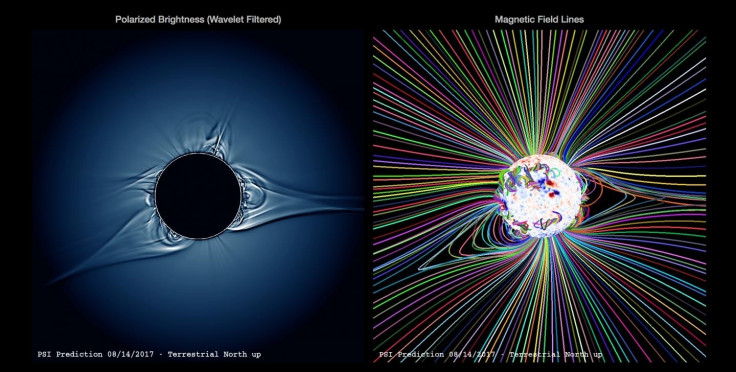Solar Eclipse 2017 spoiler alert: Watch this computer simulation of the event to see what happens
Scientists created a computer simulation of the eclipse, providing a preview of what the event will look like.

The Total Solar Eclipse on 21 August has sparked quite a lot of excitement across America. The eclipse, which spans across 14 US states, has motivated many amateur and professional star gazers to pack their bags and head for the prime locations to view the historic event and experience the beauty of totality.
However, for those still unaware of what exactly happens during an eclipse and what it may look like, scientists have created a computer simulation of the astronomical event, providing an exclusive preview just days before the eclipse occurs.
Researchers from San Diego-based Predictive Science Inc. (PSI), with support from Nasa and the Air Force Office of Scientific Research and the National Science Foundation developed highly detailed simulations, predicting what the solar corona, the plasma aura surrounding the Sun, will look like during the eclipse.
"The Solar eclipse allows us to see levels of the solar corona not possible even with the most powerful telescopes and spacecraft," Niall Gaffney, a former Hubble scientist and director of Data Intensive Computing at the Texas Advanced Computing Center, said in a statement. "It also gives high performance computing researchers who model high energy plasmas the unique ability to test our understanding of magnetohydrodynamics at a scale and environment not possible anywhere else."
Scientists used data gathered by the Helioseismic and Magnetic Imager (HMI), currently aboard NASA's Solar Dynamics Observatory (SDO), as well as magnetic field maps, solar rotation rates and advanced mathematical models to develop the digital simulation.

One of the researchers' simulations even successfully produced a coronal mass ejection (CME), which are basically large-scale explosions of energy on the sun, from an active area of the sun that will be near the east limb of the solar surface on eclipse day.
The simulations also have significant practical value, in that they can help with better prediction of space weather. Accurate prediction of space weather can help scientists avert massive and potentially deadly solar storms.
According to a 2008 report by the National Academy of Sciences, if such solar storms hit the Earth, it could cause widespread damages costing over $2tn. However, with such new accurate simulations of the corona during an eclipse, scientists get one step closer to preparing and possibly averting such a destructive eventuality.
The computer simulation of the eclipse can also provide those unable to watch the event in reality, with an idea of what happens during such astronomical events.

© Copyright IBTimes 2025. All rights reserved.






















